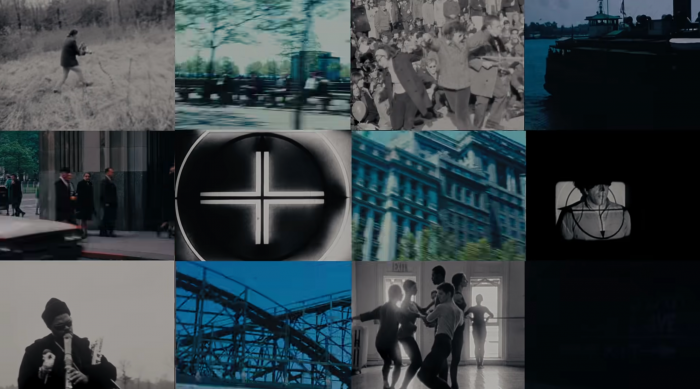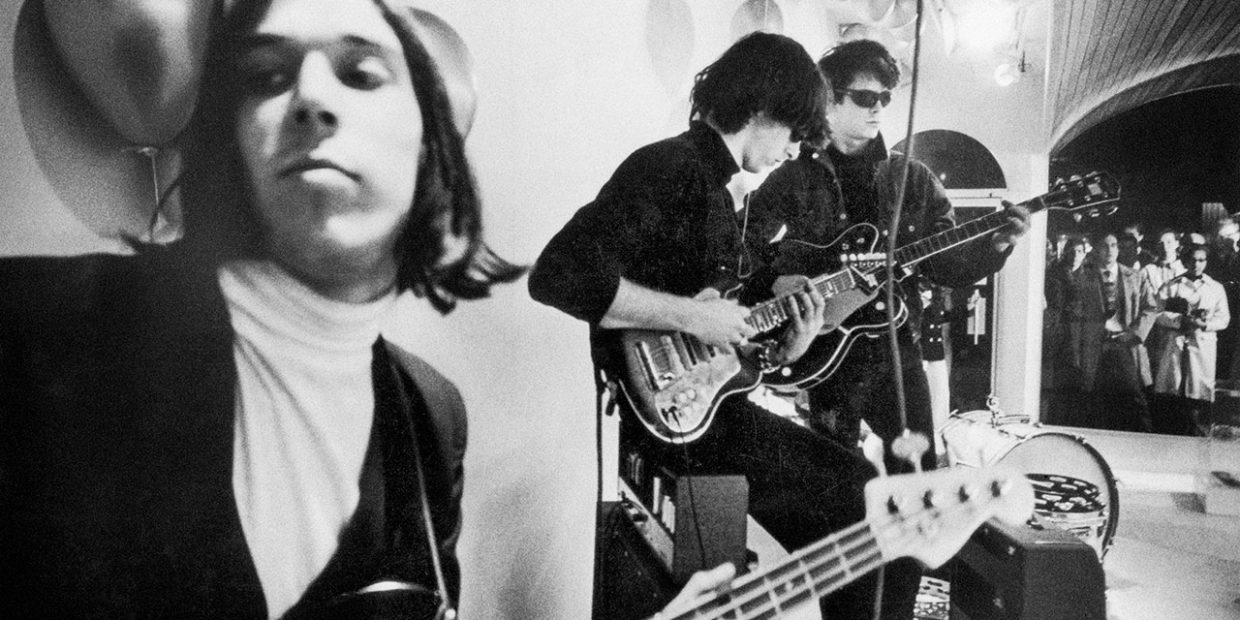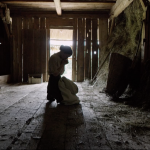Director: Todd Haynes
London Film Festival 2021 review
Todd Haynes’ The Velvet Underground opens with a 1963 clip from the US gameshow I’ve Got a Secret. In it a young Welsh composer-musician by the name of John Cale discusses a recent concert that consisted of him performing the same piece for 18 hours straight. As the future Velvets member meekly answers the questions of irreverent host Garry Moore, Cale strikes an unusual and awkward presence amidst the frivolity of 1960s primetime TV, yet just a few years later, Cale’s seminal band would achieve mythic status through a similar meeting of worlds.
Like their onetime producer Andy Warhol, the Velvet Underground was a point of both tension and synergy between the avant-garde and the mainstream. They hated hippies and loved doo-wop. They conjured film star glamour via songs of junkies and prostitutes. They were outside of pop culture yet very much a part of it – more so in retrospect, given their mere one degree of separation from David Bowie and Iggy Pop among others, not to mention the band’s immeasurable influence on the last half-century of music.
A similar kind of electricity runs through Haynes’ rapturously edited documentary, which pulls from a vast and eclectic range of footage to create a richly textured whole that feels both warmly familiar and thrillingly new. Though its story may be several decades old, the film itself is an immediate shock to the senses, whether it’s immersing viewers in the grainy, monochrome archives of the 1960s New York art scene at its scuzziest, or emerging from the murk for vibrant bursts of colour.
In stereo versions of the Velvet Underground’s 1968 song “The Gift”, Cale’s spoken word vocals are separated from the rest of the band across the two speakers, leaving headphone-users with a choice on where to direct their attention. You can either follow the gruesome short story told by Cale in the left headphone, or lose yourself in the 8-minute garage rock jam playing from the right. 1969’s “The Murder Mystery” pulled a similar trick by playing vocals from different band members simultaneously across the two speakers, making it virtually impossible to comprehend the full set of lyrics in a single listen.

The split screen of Andy Warhol’s 1966 film Chelsea Girls presents viewers with an equivalent choice on a visual level, as does Haynes’ feature, which pays tribute to both Warhol and the Velvet Underground by employing some split screen tactics of its own. The earliest chapters of frontman Lou Reed’s story are told with the screen divided into two, with a montage of scenes from Reed’s life on the left and a single extended take of Reed’s face on the right. Later, when the film is recalling the New York counterculture of the time, the frame divides into a dozen separate shots, adding up to an overwhelming celebration of the city’s transgressive art scene.
No viewer can truly process every image of The Velvet Underground in a single viewing, and no two viewers will watch the film in quite the same way, leaving it up to each of us to decide which parts of the frame to get lost in. At times, you may even choose to ignore the voiceover completely in order to immerse yourself in the beautiful chaos of the visuals, since, again, there’s always the option of future viewings to catch what you missed.
Make no mistake, The Velvet Underground in many aspects is still a fairly traditional rockumentary, not least in its use of famous talking heads. Standouts include Jonathan Richman of the Modern Lovers, who once more proves himself to be proto-punk’s most adorable frontman as he reflects on his early days as an awestruck VU fanboy and recalls his dismay at the band’s eventual breakup. Speaking of which, Haynes’ film also offers the expected tales of inflated egos and in-band tensions, most notably between Reed and Cale, who come to embody the group’s fragile alliance between rock and the avant-garde.
All the same, Haynes’ film channels the nature of the band and its members best through its mesmerising collage of decades-old footage. For all the wild behaviour and pleasure-seeking habits that coloured Reed’s life in these years, the gritty public image of the Velvet Underground was ultimately a style and a posture, not too different from the glamorous celebrity facades captured in Andy Warhol’s art. Nonetheless, both Warhol and the Velvets saw truth and transcendence in the surface-level personas we present to the world, and the same can be said of Haynes’ exceptional documentary, which recognises pop culture as a language we all speak and a means by which we can perceive and define ourselves. If people are all products of culture, then The Velvet Underground packs so much human experience into the span of two hours that it’s practically spilling out the frame.





